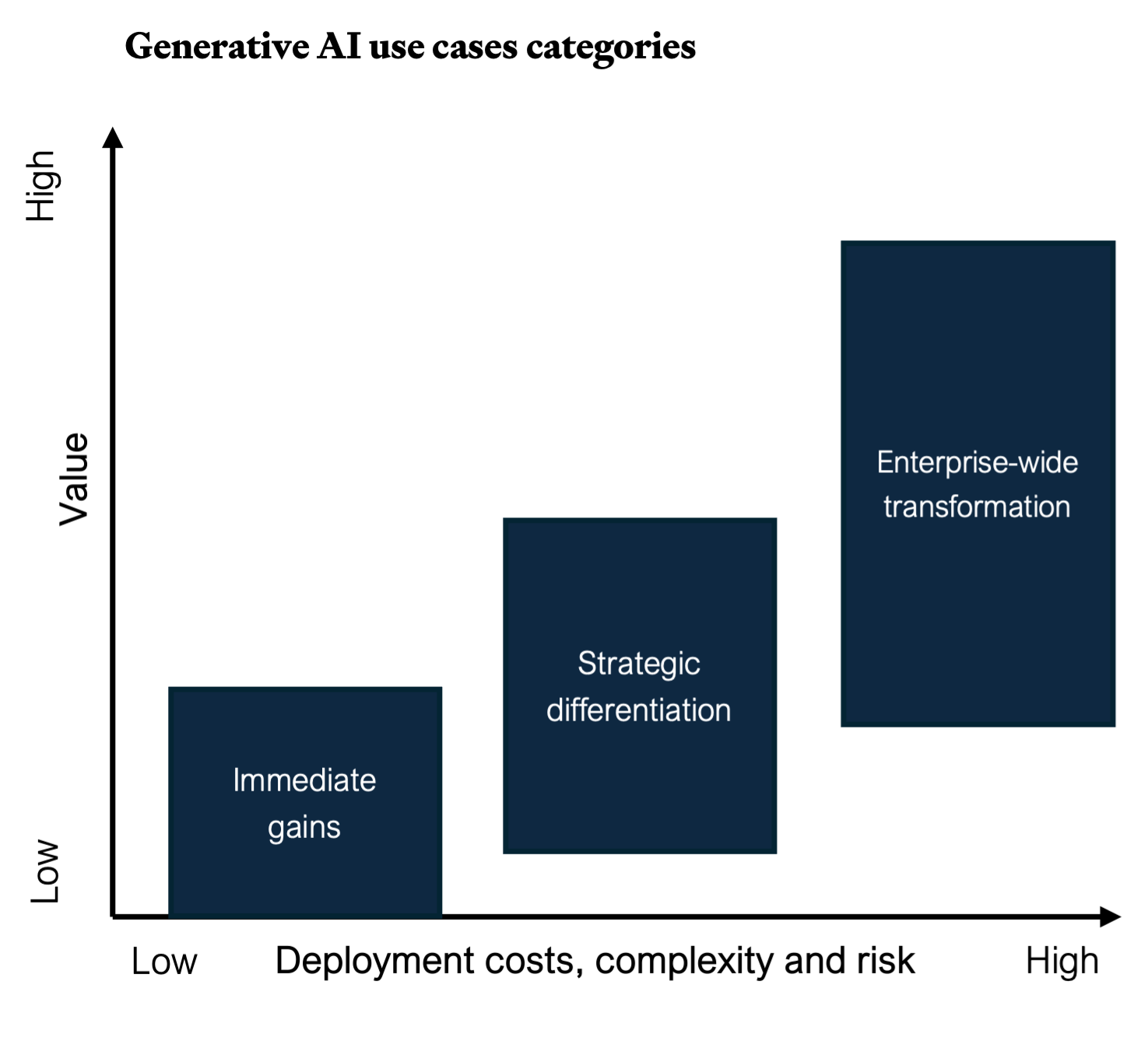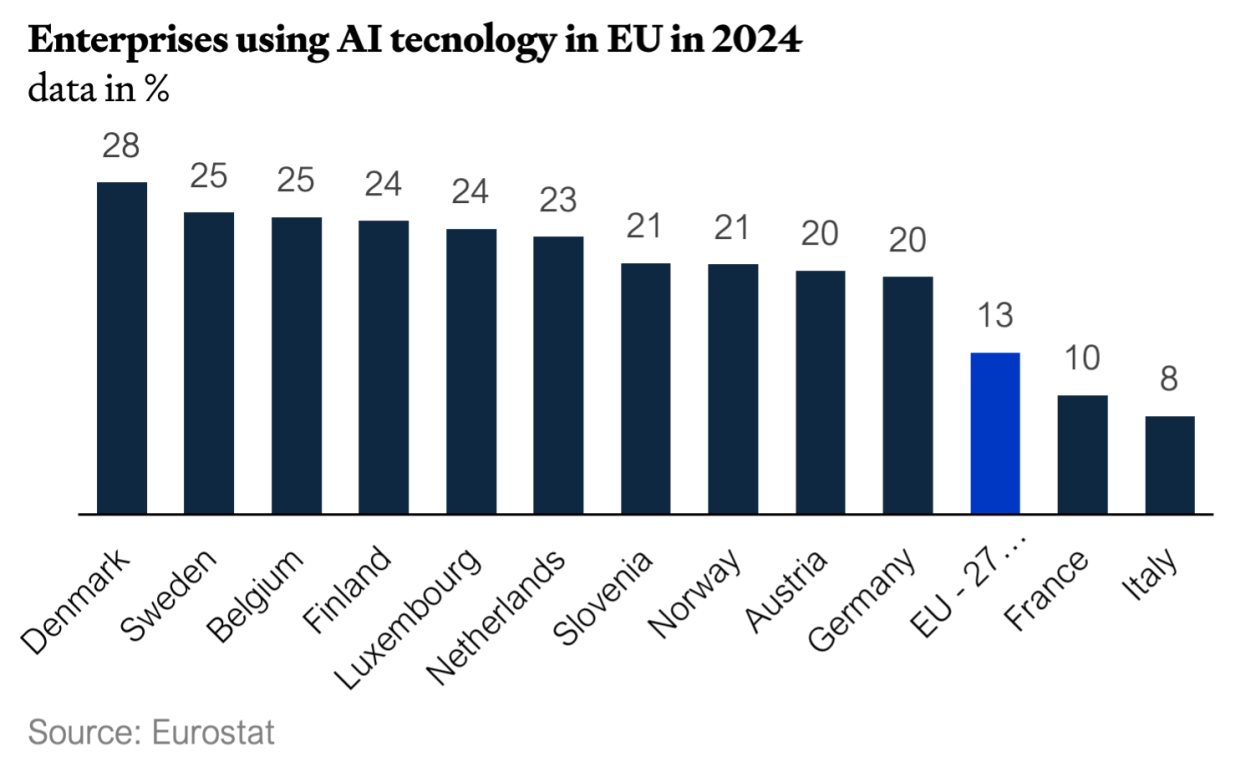
Robert Solow (1987) pointed out the "productivity paradox," observing that “a technological revolution, a drastic change in our productive lives,” was paradoxically accompanied by “a slowing-down of productivity growth, not by a step up.” Economists have often described this phenomenon as a J-curve, wherein productivity initially declines before later accelerating. In the short term, adopting new technologies may suppress productivity as organizations and employees adapt to new workflows and practices. Furthermore, these technologies can inadvertently contribute to inefficiencies, such as an increase in unproductive activities: how many unnecessary emails have you read today?
Additionally, general-purpose technologies like AI necessitate significant complementary investments, including the co-creation of new processes, products, business models, and the development of human capital. Such complementary investments increase the costs associated to investments in AI and depress returns (Yulia Sullivan, 2022).

